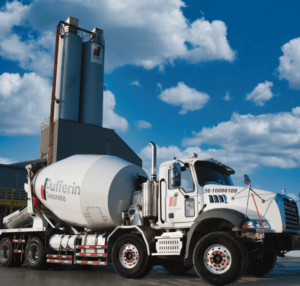Which Bitumen Paint is Best for Concrete Protection?
Concrete is one of the most widely used building materials in the world. It’s strong, durable, and versatile, but over time, concrete surfaces can face challenges from the environment, such as moisture, cracks, and corrosion. That’s where bitumen paint for concrete comes in. Bitumen paint is a popular solution used to protect concrete from these damaging factors.
But with so many options available, how do you know which bitumen paint is best for concrete protection? In this blog post, we’ll break down everything you need to know about choosing the best bitumen paint for your concrete surfaces. We’ll cover its benefits, how it works, and what factors you should consider when selecting the right product for your needs.
What is Bitumen Paint for Concrete?
Before diving into which bitumen paint is best, let’s first understand what bitumen paint is. Bitumen paint is a coating made from bitumen, a sticky, black substance derived from petroleum. It’s known for its excellent water-resistant and protective properties, which makes it ideal for protecting concrete surfaces.
Bitumen paint can be applied to a variety of concrete structures, including foundations, walls, floors, and even roofs. It creates a waterproof barrier that helps prevent water from seeping into the concrete and causing damage. This is especially useful in areas exposed to moisture, like basements or outdoor surfaces.
How Does Bitumen Paint Protect Concrete?
Bitumen paint works as a protective coating that shields concrete surfaces from water, chemicals, and even physical damage. When applied to concrete, the bitumen paint forms a strong, flexible layer that adheres tightly to the surface, preventing water from penetrating the material. This protective layer also helps to prevent rust and corrosion in metal reinforcements within the concrete.
In addition to waterproofing, bitumen paint also protects against the growth of mold and mildew. It helps reduce the risk of cracks, which can develop in concrete when exposed to moisture over time. The paint also provides an extra layer of protection against harsh weather conditions, UV rays, and other environmental factors.
What Are the Benefits of Bitumen Paint for Concrete?
Using bitumen paint for concrete comes with a number of advantages. Below, we’ll explore the key benefits that make bitumen paint an excellent choice for concrete protection.
1. Waterproofing
The primary benefit of bitumen paint for concrete is its waterproofing capability. Concrete is porous, which means it can absorb water over time. When moisture gets trapped in concrete, it can cause cracks, spalling, and other forms of damage. Bitumen paint creates a barrier that prevents water from penetrating the concrete, keeping it dry and intact.
2. Durability
Bitumen paint is highly durable and long-lasting. Once applied, it creates a tough, protective layer that can withstand wear and tear, weather conditions, and even chemical exposure. This durability makes it perfect for both indoor and outdoor applications.
3. Protection from Corrosion
Concrete structures often contain metal reinforcements, such as steel bars. When moisture infiltrates the concrete, it can cause these metal bars to rust, which weakens the structure. Bitumen paint forms a barrier that prevents water from reaching the metal, reducing the risk of corrosion and extending the lifespan of the concrete structure.
4. Resistance to Chemicals
Bitumen paint also provides resistance to many chemicals, including oils, acids, and alkalis. This is important in environments where concrete is exposed to harsh substances, such as factories, warehouses, or garages. The chemical resistance helps preserve the integrity of the concrete and prevents it from breaking down over time.
5. Flexibility
Concrete can expand and contract with temperature changes, and cracks can easily form if the surface is not flexible. Bitumen paint is highly flexible, which allows it to expand and contract with the concrete without cracking or peeling. This flexibility ensures the coating stays intact even under changing environmental conditions.

Which Type of Bitumen Paint is Best for Concrete Protection?
When it comes to choosing the best bitumen paint for concrete, there are a few different types to consider. The right choice depends on your specific needs and the environment in which the concrete will be used. Below are the main types of bitumen paints for concrete, along with their features.
1. Cold Applied Bitumen Paint
Cold applied bitumen paint is ready to use straight out of the can, without the need for heating. This type of bitumen paint is typically used for smaller projects and areas where high heat is not required. It’s easy to apply with a brush, roller, or sprayer and is ideal for indoor and outdoor use.
Pros:
- Easy to apply and doesn’t require heating
- Suitable for small-scale applications
- Quick drying time
Cons:
- May not be as durable as hot-applied bitumen
- Limited resistance to extreme temperatures
2. Hot Applied Bitumen Paint
Hot applied bitumen paint is heated before application, which allows it to bond better to the concrete surface. This type of paint is typically used for larger projects or areas exposed to extreme weather conditions. Hot applied bitumen paint forms a stronger, more durable coating compared to cold applied versions.
Pros:
- Stronger and more durable than cold-applied bitumen
- Better resistance to extreme temperatures and weather
- Ideal for large-scale applications
Cons:
- Requires heating before application
- More difficult to apply and requires specialized equipment
3. Bitumen Paint with Reinforced Fibers
Some bitumen paints are reinforced with fibers, such as glass or polyester, to provide additional strength and flexibility. These types of paints are ideal for concrete surfaces that experience heavy foot traffic or mechanical stress. The fibers help prevent cracking and provide extra protection against impact damage.
Pros:
- Enhanced strength and flexibility
- Ideal for high-traffic or high-stress areas
- Resistant to cracking and impact damage
Cons:
- More expensive than standard bitumen paint
- Requires more careful application to avoid uneven coatings
4. Bitumen Paint with UV Protection
Bitumen paints with UV protection are specially formulated to protect the concrete from the harmful effects of ultraviolet (UV) rays. UV rays can cause the paint to degrade over time, leading to fading and reduced effectiveness. This type of bitumen paint helps to maintain the integrity of the coating for a longer period, especially in outdoor applications where UV exposure is higher.
Pros:
- Provides protection from UV rays
- Extends the lifespan of the coating
- Ideal for outdoor applications exposed to direct sunlight
Cons:
- May be more expensive than standard bitumen paint
- Can take longer to dry
How to Choose the Best Bitumen Paint for Concrete
When selecting the best bitumen paint for concrete, there are several factors to consider to ensure that you get the right product for your needs. Below are the key factors to keep in mind:
1. Purpose of the Concrete Surface
Consider the purpose of the concrete surface you’re protecting. Is it a foundation, basement floor, exterior wall, or roof? Different types of bitumen paint are designed for different applications. For example, if you’re waterproofing a basement, you’ll need a product that offers strong moisture resistance, while if you’re protecting a concrete roof, you may need a paint with UV protection.
2. Exposure to Weather Conditions
If the concrete surface is exposed to harsh weather conditions, such as rain, snow, or extreme heat, it’s important to choose a bitumen paint that can withstand these conditions. Hot-applied bitumen or bitumen paint with UV protection would be ideal for outdoor surfaces that experience direct sunlight or high temperatures.
3. Type of Concrete Surface
The texture and condition of the concrete surface also play a role in choosing the right bitumen paint. Smooth, sealed surfaces may require less preparation before application, while rough or damaged surfaces may need a bitumen paint that can fill in cracks and gaps.
4. Ease of Application
Consider how easy the paint will be to apply. Cold-applied bitumen paint is easier to work with and does not require special equipment, while hot-applied bitumen paint may require heating and additional equipment. Choose the type that matches your skills and resources.
5. Budget
Bitumen paints come in a range of prices. Standard cold-applied versions tend to be more affordable, while reinforced or UV-protected versions may come at a higher cost. Consider your budget when choosing the best product, keeping in mind that a higher-quality product may provide better long-term protection.
Conclusion
Bitumen paint for concrete is an excellent solution for protecting concrete surfaces from moisture, corrosion, and other environmental damage. When choosing the best bitumen paint, it’s important to consider the specific needs of your project, such as the type of concrete, exposure to weather, and application method. Whether you opt for cold-applied, hot-applied, or UV-protected bitumen paint, the key is to select a product that offers strong protection and durability.
By understanding the different types of bitumen paint and their benefits, you can make an informed decision and ensure that your concrete surfaces are properly protected for years to come.
For More Insightful Articles Related To This Topic, Feel Free To Visit: freshvoicehub.











Post Comment